Xiaomi Mi 10i vs OnePlus Nord vs Samsung Galaxy M51: Specs comparison
Who’s the new king in the sub Rs 30,000 segment?
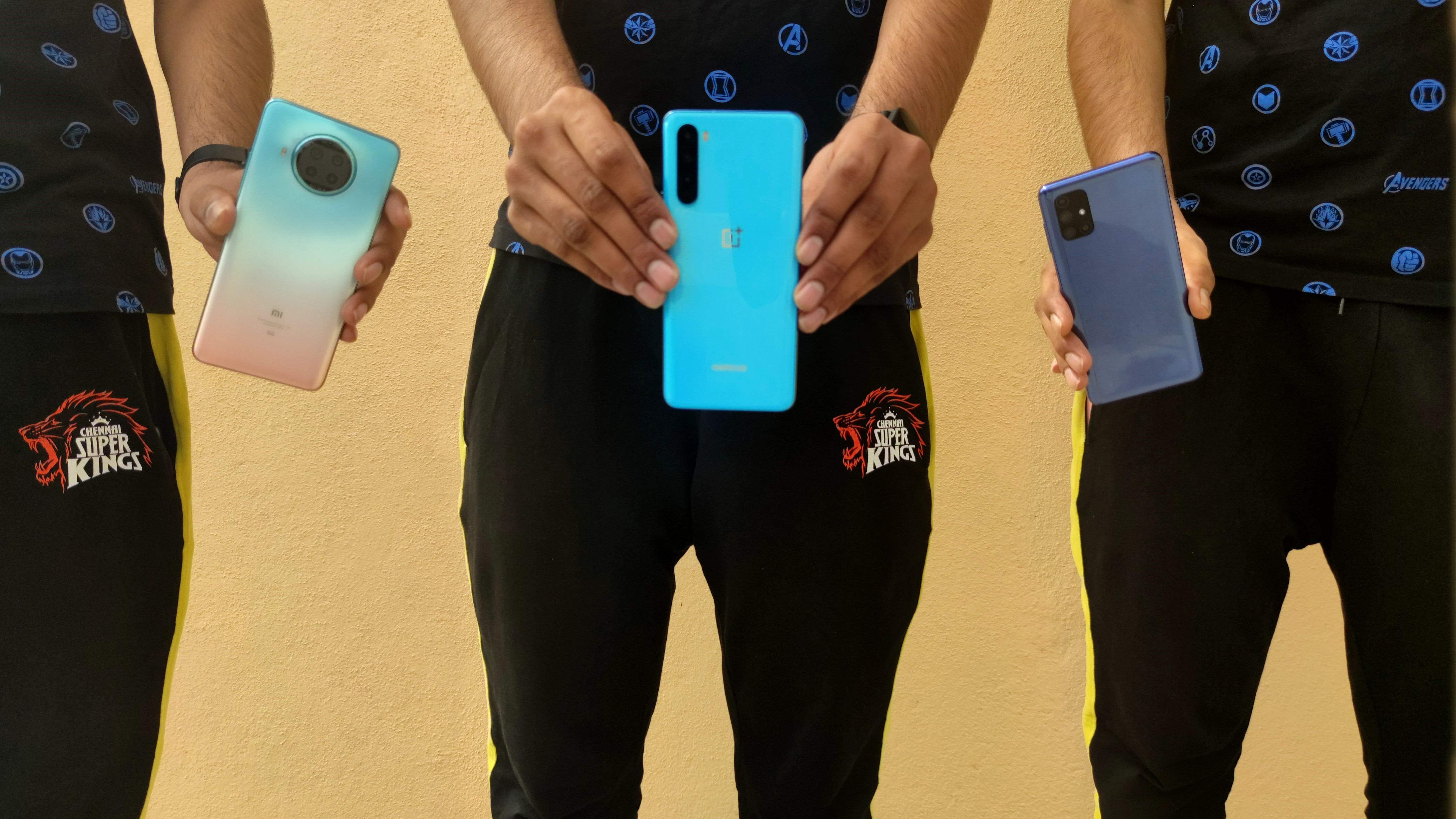
The Xiaomi Mi 10i is the latest smartphone in the town and is also the first major smartphone launch of 2021. The Xiaomi Mi 10i brings flagship-grade specifications such as 108MP primary camera, 120Hz refresh rate, 33W fast charging and more to the affordable segment. The sub Rs 30,000 last year was dominated by OnePlus Nord, Samsung Galaxy M51, and also Pixel 4a.
In this article, we will have a look at detailed specifications of the Xiaomi Mi 10i, OnePlus Nord, and Samsung Galaxy M51 and compare them. These phones will now rival against each other in the Rs 30,000 segment.
While Xiaomi is making its comeback to the segment after Redmi K20 Pro, OnePlus made its debut to launch the Nord last year starting at Rs 24,999. Samsung on the other hand went ahead and added Galaxy M51 with a massive battery and Snapdragon chipset which performed really well.
Price
| Header Cell - Column 0 | Mi 10i | OnePlus Nord | Samsung Galaxy M51 |
|---|---|---|---|
| 6+64GB | Rs 20,999 | Rs 24,999 | - |
| 6+128GB | Rs 21,999 | - | Rs 22,999 |
| 8+128GB | Rs 23,999 | Rs 27,999 | Rs 24,999 |
| 12+256GB | - | Rs 29,999 | Row 3 - Cell 3 |
- Check out Xiaomi Mi 10i on Amazon
- Check out OnePlus Nord on Amazon
- Check out Samsung Galaxy M51 on Amazon
Design
- Xiaomi Mi 10i: 6.67-inch Full HD+ LCD, 120Hz
- OnePlus Nord: 6.44-inch Full HD+ Fluid AMOLED, 90Hz
- Samsung Galaxy M51: 6.7-inch Full HD+ AMOLED, 60Hz
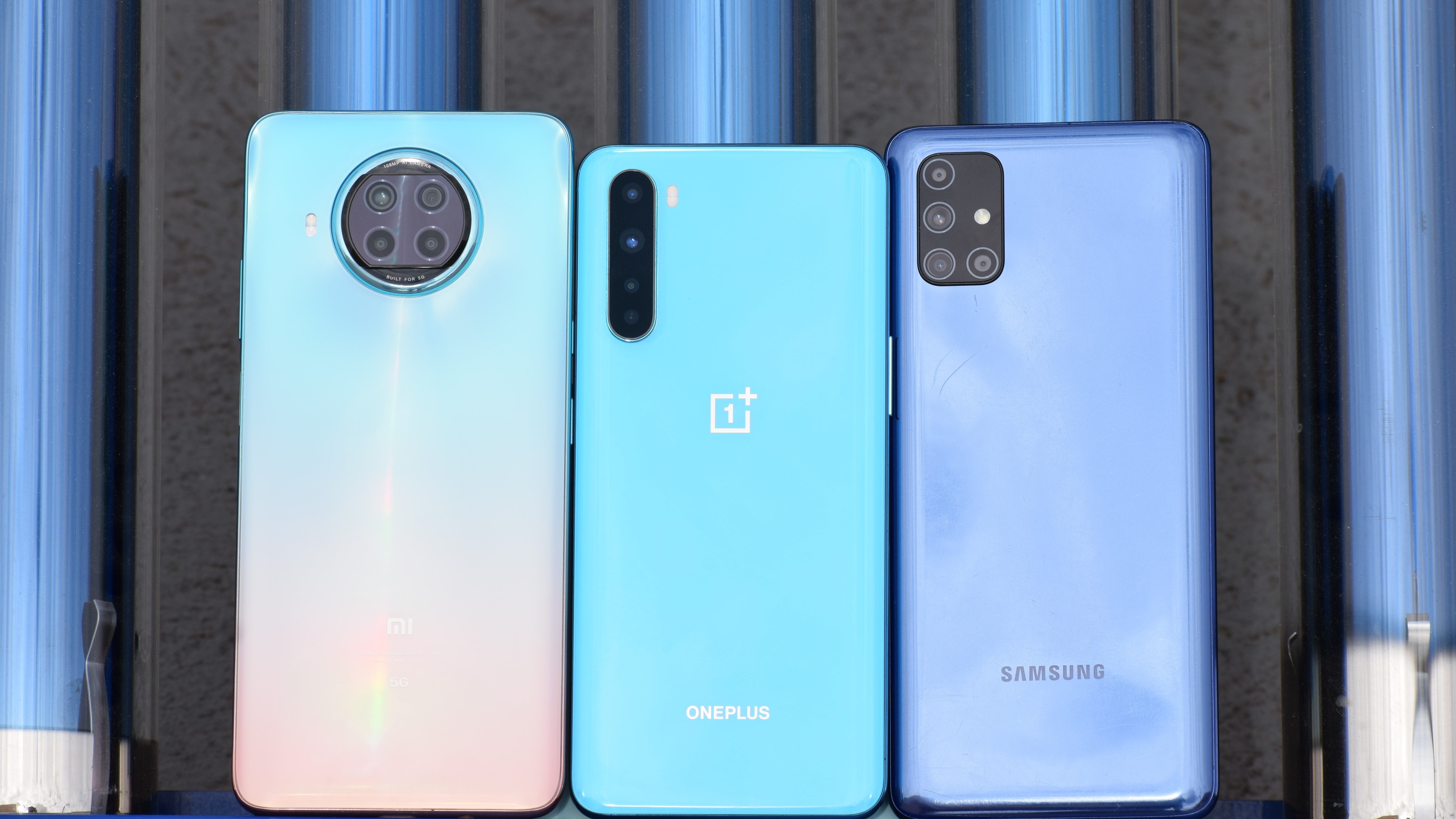
The Xiaomi Mi 10i sports a very similar design as the Poco X3. There is also a circular camera module which reminds us of the OnePlus 7T especially in the Pacific Sunrise colour option. The back is made up of polycarbonate material which is protected by Corning Gorilla Glass 5. It gives a smooth finish and is surprisingly not a fingerprint magnet. The Mi 10i is available in Pacific Sunrise, Atlantic Blue and Midnight Black colour options.
The OnePlus Nord comes with a glossy glass body with Corning Gorilla Glass 5 on the back. Colour options include Blue Marble, Gray Onyx, and Gray Ash. Holding the phone feels solid and comfortable. It is also the slimmest and lightest phone among the three phones in the list.
The Samsung Galaxy M51 offers glasstic back which offers better grip and it is not as slippery as other phones with a glass back. To make it even worse, Samsung also misses out on providing a complementary silicone case in the box. The device is heavy but well balanced and you’ll get used to it once you start using it.
Display
- Xiaomi Mi 10i: 6.67-inch Full HD+ LCD, 120Hz
- OnePlus Nord: 6.44-inch Full HD+ Fluid AMOLED, 90Hz
- Samsung Galaxy M51: 6.7-inch Full HD+ AMOLED, 60Hz
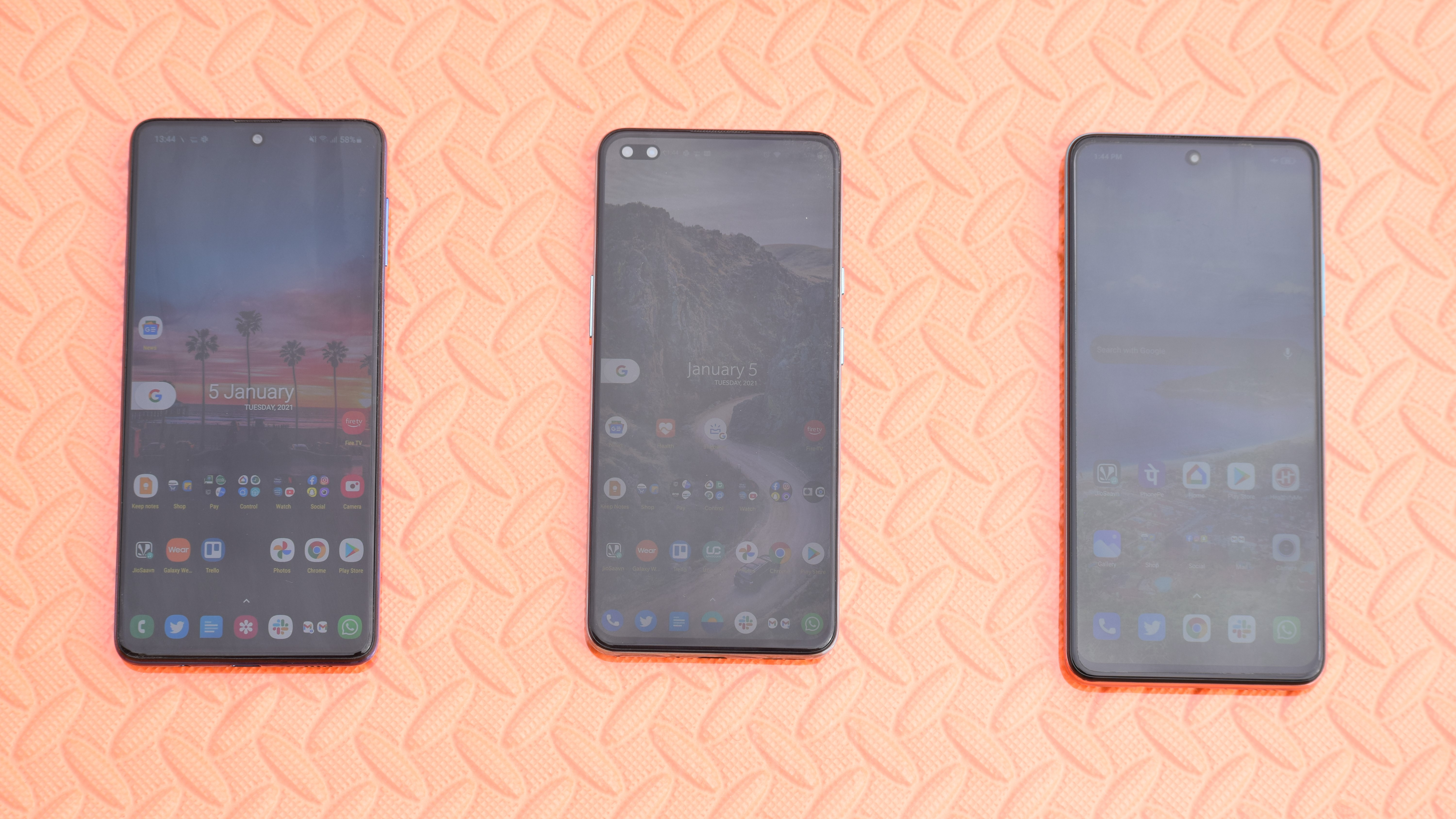
Xiaomi has retained the display from the Mi 10T smartphone. It offers a 6.67-inch Full HD+ (2400 x 1080p) LCD screen with 120Hz refresh rate. The AdaptiveSync feature also makes its way to the Mi 10i which switches between 30Hz, 48Hz, 50Hz, 60Hz, 90Hz and 120Hz to match with the content. It can go up to 450 nits. Apart from that, the display is also TÜV Rheinland certified for low blue content consumption, supports HDR10+ content as well as HD streaming. And lastly, it is protected by Corning Gorilla Glass 5.
Get daily insight, inspiration and deals in your inbox
Sign up for breaking news, reviews, opinion, top tech deals, and more.
The OnePlus Nord is still the cheapest phone with a high refresh rate display and AMOLED panel. It offers a 6.44-inch Fluid AMOLED screen with Full HD+ (2,400 x 1,080p) resolution. You get a 90Hz refresh rate panel for smoother scrolling experience. The phone is tall with a 20:9 aspect ratio. It is capable of handling HDR content and comes with support for sRGB, DisplayP3, and AMOLED wide gamut screen calibration modes. The display is also protected by Gorilla Glass 5.
Samsung on the other hand offers a Super AMOLED panel but misses out on the high refresh screen. You get a huge 6.7-inch Full HD+ Super AMOLED Plus Infinity-O panel with a tall 20:9 aspect ratio. It is protected by a layer of Gorilla Glass 3, which is slightly outdated. The handset also supports HD streaming and HDR content.
Performance
- Xiaomi Mi 10i: Snapdragon 750G, 5G capable, Adreno 619 GPU
- OnePlus Nord: Snapdragon 765G, 5G capable, Adreno 620 GPU
- Samsung Galaxy M51: Snapdragon 730G, No 5G support, Adreno 618 GPU
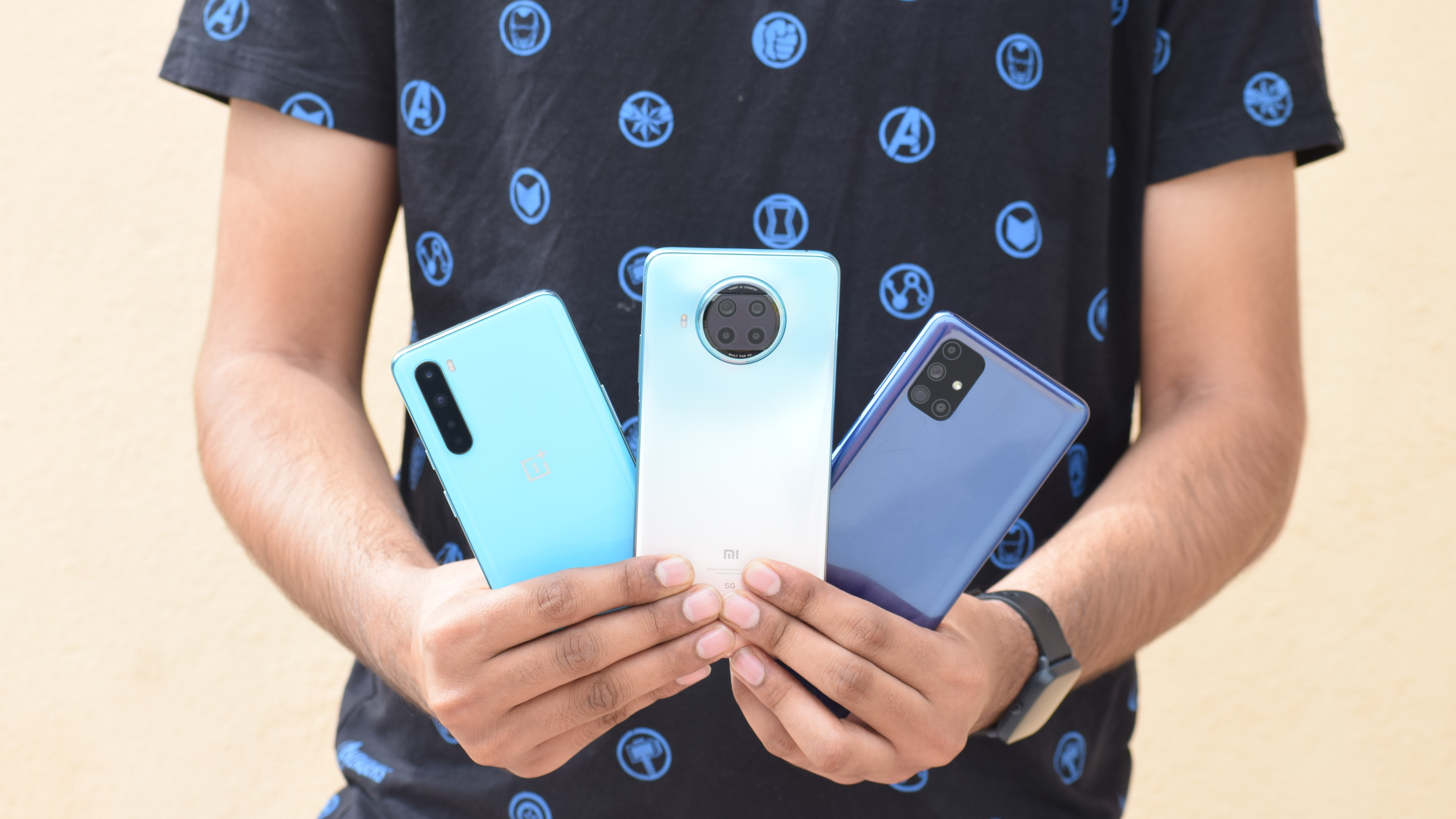
Xiaomi is the second smartphone maker to bring the latest Snapdragon 750G chipset to India. The Mi 10i packs in the new Snapdragon 750G chipset which is built on an 8nm fabrication process and eight CPUs. It is also integrated with X52 5G modem which means the phone is also future proof. The Mi 10i is available in three configurations - 6+64GB, 6+!28GB, and 8+128GB.
The OnePlus Nord is powered by the Snapdragon 765G SoC, which is also 5G capable, thanks to the Snapdragon X52 5G modem. It is one of the most advanced chipsets on the market, built on an efficient 7nm process with integrated modem components. You get a 6GB+64GB variant which is exclusive to India along with the standard 8GB +128GB variant and the top-of-the-line 12GB+256GB variant.
The Samsung Galaxy M51 is available in two configurations - 6+128GB and 8+128GB. The device is powered by Snapdragon 730G SoC octa-core chipset built on an 8nm fabrication process clocked at 2.2GHz. The performance drastically improved from Exynos chipset.
Rear camera
- Xiaomi Mi 10i: 108MP Samsung HM2 primary camera
- OnePlus Nord: 48MP Sony IMX586 primary camera
- Samsung Galaxy M51: 64MP Sony IMX 682 primary camera
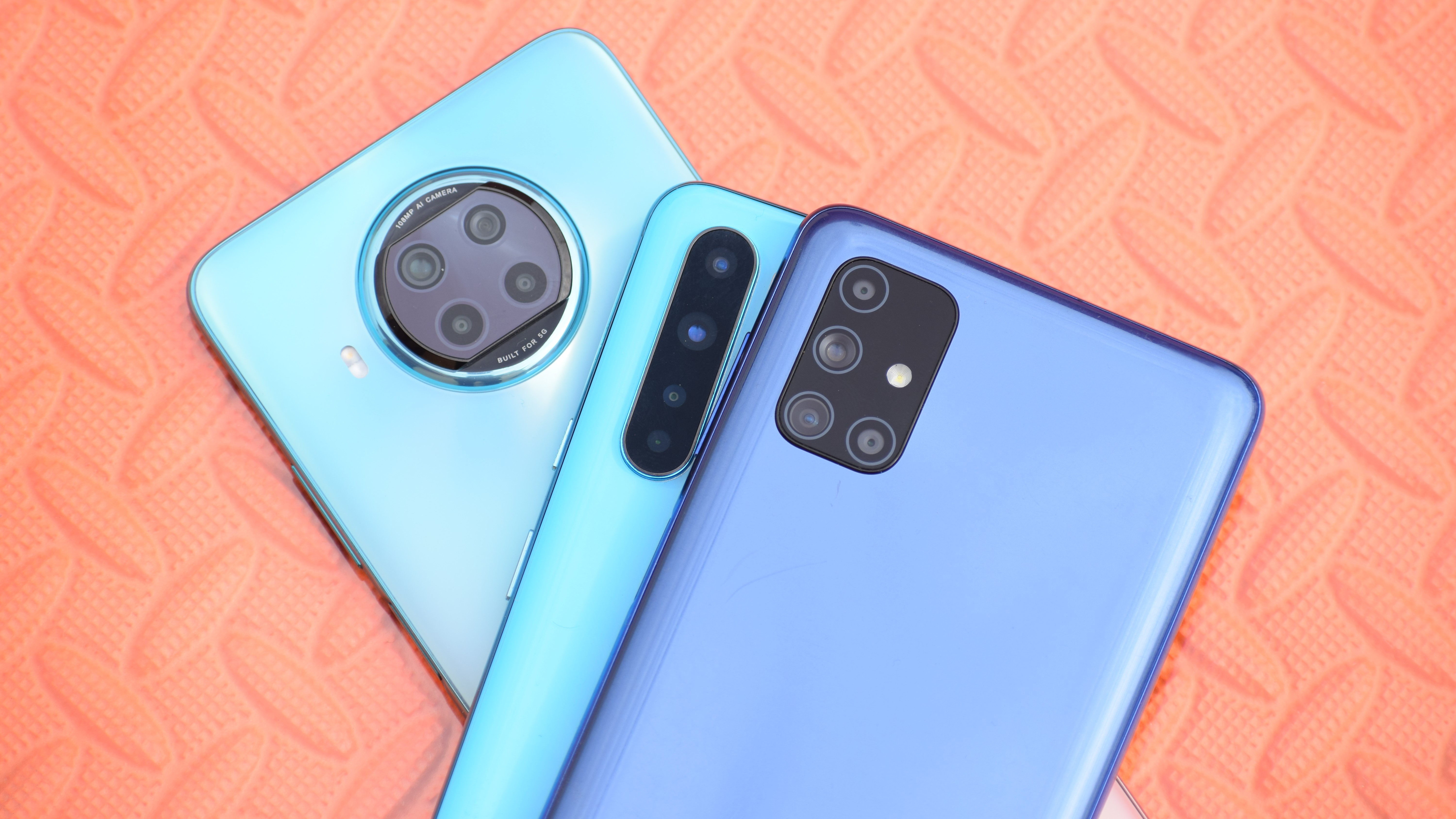
This is where Xiaomi brings the game-changing feature. The Mi 10i is packed with a 108MP camera which uses the Samsung HM2 sensor. This also marked the debut of Samsung HM2 in India. It is followed by an 8MP ultra-wide shooter with a 120-degree field-of-view, a 2MP macro shooter and a 2MP depth sensor. It can also shoot 4K and maco videos. The Xiaomi Mi 10i is the cheapest 108MP camera currently in India - the second cheapest costs almost twice.
OnePlus Nord was the brand’s first quad-camera phone. The primary camera on the rear is inherited from the flagship OnePlus 8. It's a Sony IMX586 sensor along with OIS and EIS with f/1.75 aperture. It is followed by an 8MP f/2.25 wide-angle camera with 119-degree field of view. This is accompanied by a 5MP depth sensor and a 2MP macro shooter with an aperture f/2.4.
The Galaxy M51 has a quad-camera stack at the back, featuring a 64MP Sony IMX682 primary sensor of an f/1.8 aperture, a 12MP ultra-wide sensor of an f/2.2 aperture, a 5MP depth sensor and a 5MP macro sensor. On the front, the phone has a 32MP selfie camera of an f/2.2 aperture.
Front camera
- Xiaomi Mi 10i: 16MP
- OnePlus Nord: 32MP + 8MP
- Samsung Galaxy M51: 32MP
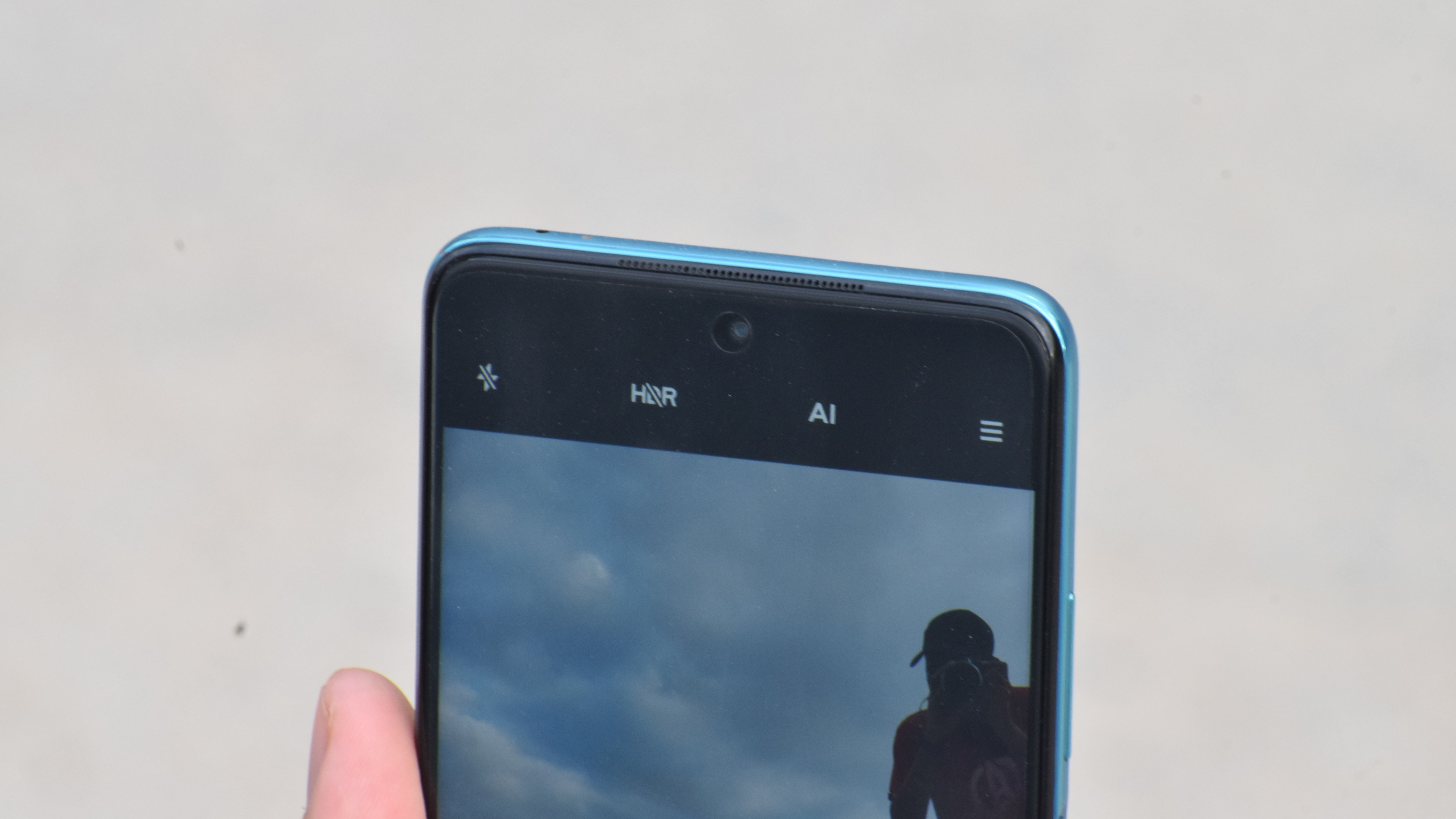
On the Mi 10i, the selfies are handled by a 16MP punch-hole camera. Shooting modes include long exposures, photo filters, HDR, beautify, sky replacement, Pro mode for photos and videos and more.
OnePlus brings an additional sensor on board here. The Nord sports a 32MP Sony IMX161 primary snapper along with an 8MP wide-angle camera housed inside the pill-shaped notch.
On the Galaxy M51, you get a 32MP Sony IMX616 selfie camera which clicks 8MP shots by default and you can also click 32MP selfies. The wide-angle selfies are also available although there isn’t much difference.
Battery and charging
- Xiaomi Mi 10i: 4820mAh, 33W fast charging
- OnePlus Nord: 4115mAh, 30W fast charging
- Samsung Galaxy M51: 7000mAh, 25W fast charging
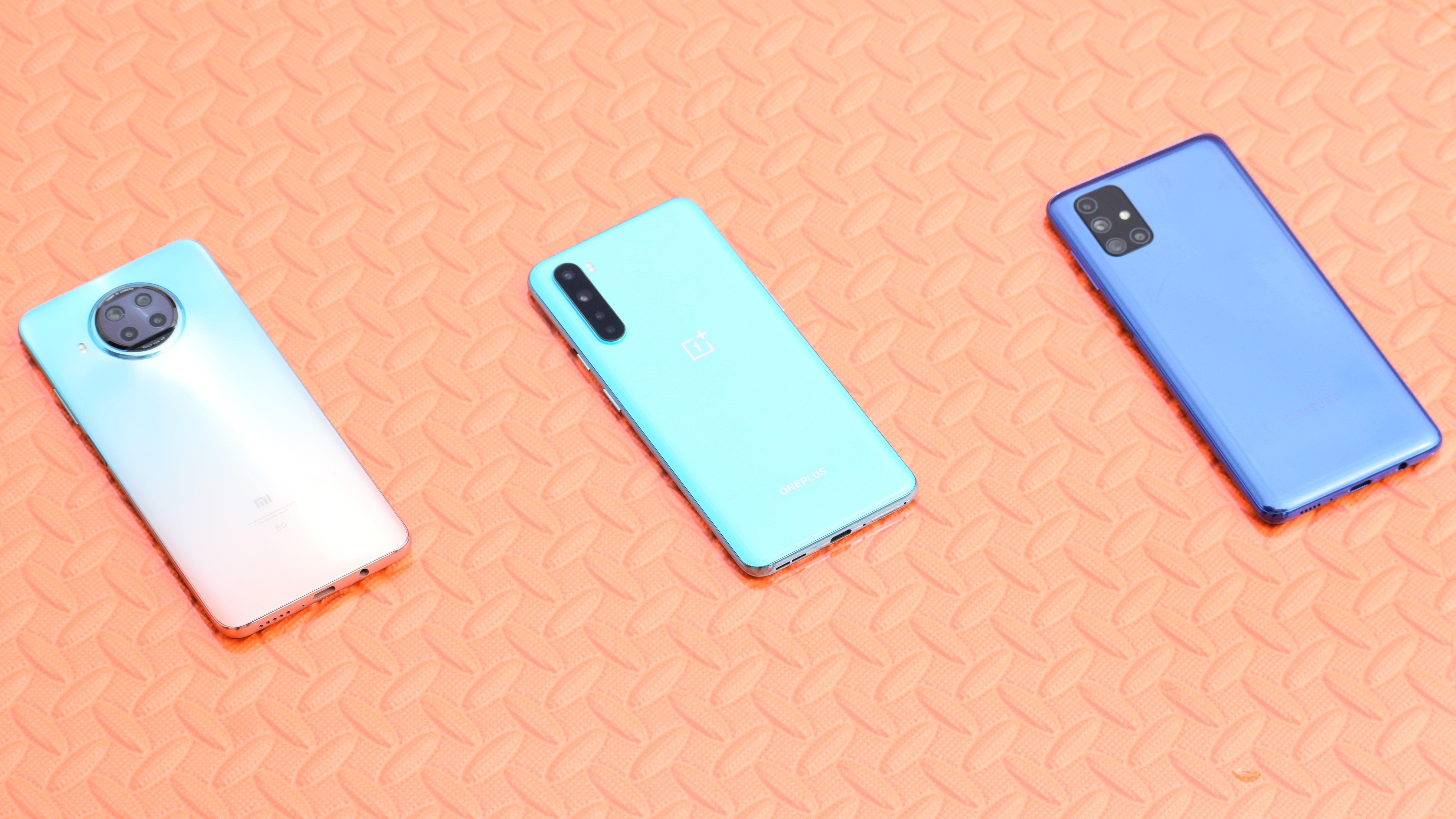
The Xiaomi Mi 10i has a 4,820mAh battery with support for 33W fast charging, which should be able to refuel it completely in an hour. The OnePlus Nord packs in a small 4,115mAh battery with support for 30W fast charging which can top up in an hour as well.
The Samsung Galaxy M51 beats everyone with its humongous 7,000mAh battery. This is by far the largest battery capacity we’ve seen on a mainstream smartphone. It supports 25W charging via Type-C port.
Software
- Xiaomi Mi 10i: MIUI 12 based on Android 10
- OnePlus Nord: Oxygen OS 10.5 based on Android 10
- Samsung Galaxy M51: One UI 2.5 based on Android 10
The Xiaomi Mi 10i runs on MIUI 12 based on Android 10 with no ads or much bloat. The OnePlus Nord on the other hand brings the fan favourite Oxygen OS, however, the device still runs on Android 10 and the Android 11 is expected to drop later this month.
Samsung’s OneUI has come a long way in the past couple of years, the Galaxy M51 runs on One UI 2.1 core based on Android 10 with a good set of customizations and features.
Everything else
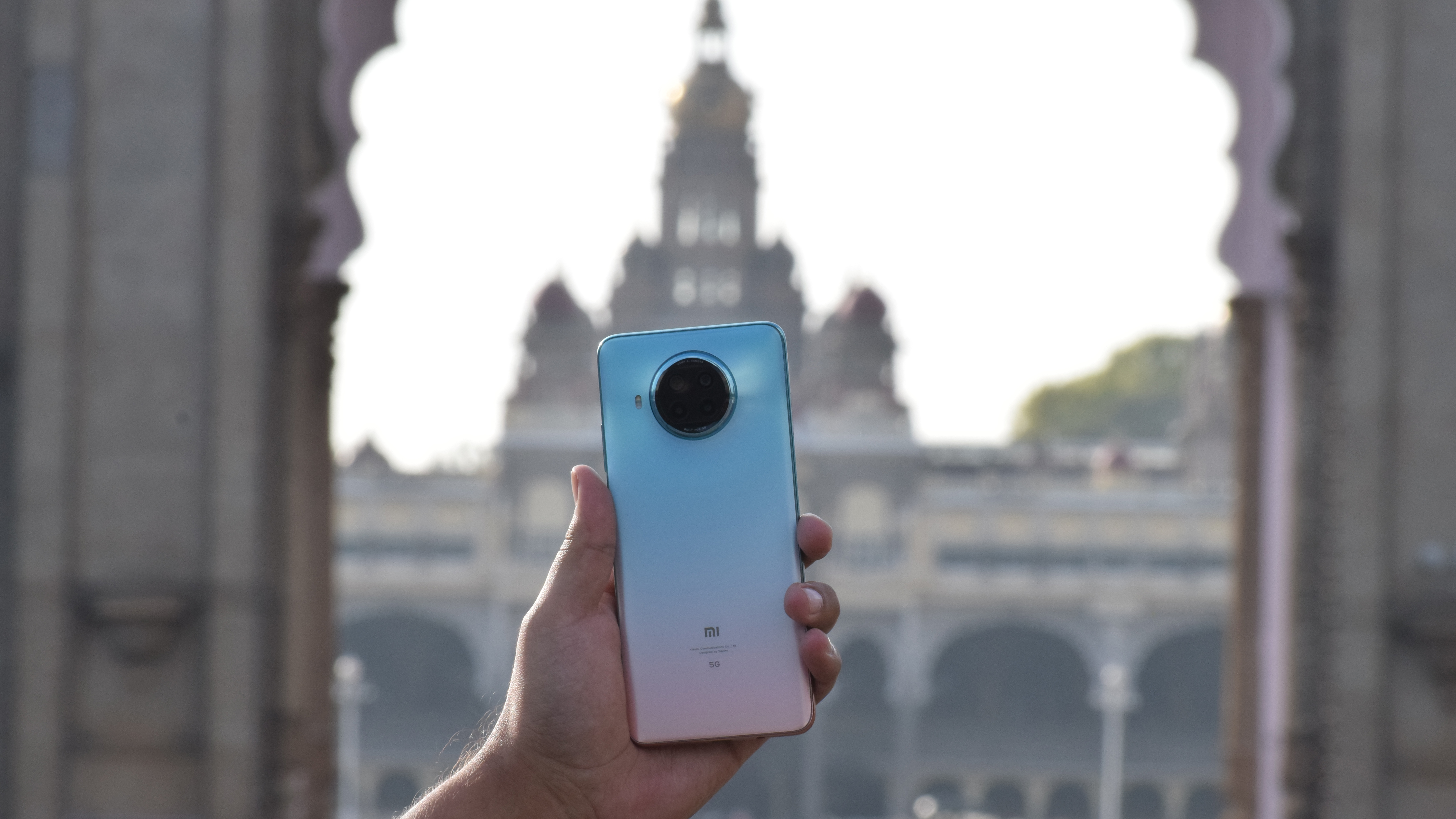
The Xiaomi Mi 10i brings features like a dedicated microSD card, IP53 rating, dual stereo speakers, an IR blaster, and side-mounted fingerprint scanner. The OnePlus Nord brings in-display fingerprint scanner and removes the headphone jack while you get the alert slider.
The Samsung Galaxy M51 also retains the headphone jack and opts for the side-mounted fingerprint scanner.
Xiaomi Mi 10i vs OnePlus Nord vs Samsung Galaxy M51 specs
| Header Cell - Column 0 | Mi 10i | Nord | Galaxy M51 |
|---|---|---|---|
| Display | 6.67" FHD+ LCD, 120Hz | 6.44" FHD+ AMOLED, 90Hz | 6.7" FHD+ AMOLED, 90Hz |
| Processor | Snapdragon 750G, 5G | Snapdragon 765G, 5G | Snapdragon 730G, 4G |
| RAM | 6/8GB | 6/8/12GB | 6/8GB |
| Storage | 64/128GB | 64/128/256GB | 128GB |
| Rear camera | 108+8+2+2MP | 48+8+5+2MP | 64+12+5+5MP |
| Front camera | 16MP | 32+8MP | 32MP |
| Battery | 4820mAH | 4115mAH | 7000mAh |
| Charging | 33W | 30W | 25W |
| Starting price | Rs 20,999 | Rs 24,999 | Rs 22,999 |
Srivatsa is a prolific writer who spearheads the core writing team on tech news, buying guides, reviews, and all gadget articles. He is passionate about technology.
